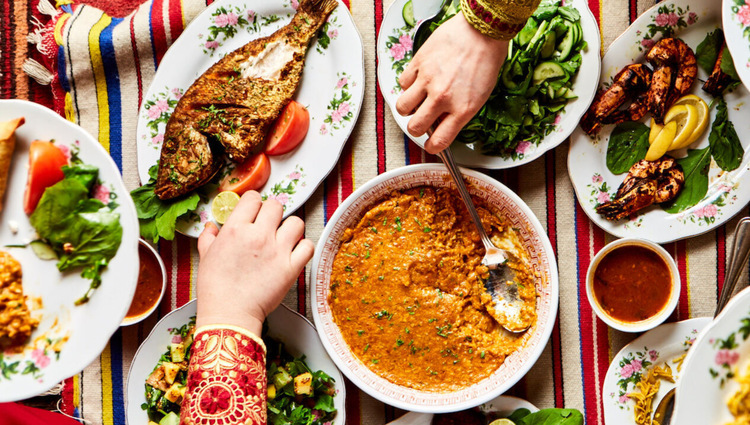Introduction: The Culinary Culture of the Emirates
Emirati cuisine is a reflection of the country’s rich cultural heritage. With influences from Arab, Indian, and Persian cuisines, Emirati dishes are a blend of spices, flavors, and ingredients unique to the region. The use of fragrant herbs such as saffron, cinnamon, and cardamom, along with traditional cooking techniques such as grilling and slow-cooking, have been passed down through generations. The cuisine has evolved over time, but it still holds on to its traditional roots, making it a unique and flavorful experience.
Middle Eastern Neighbors and Their Influence on Emirati Cuisine
The UAE shares borders with several Middle Eastern countries, including Iran, Oman, Saudi Arabia, and Qatar. These countries have played a significant role in shaping Emirati cuisine. The influence can be seen in the use of ingredients such as saffron, rose water, and dates, which are popular in Persian cuisine. The use of lamb, rice, and spices such as cumin, coriander, and cardamom, which are common in Saudi Arabian and Omani cuisine, is also evident in Emirati dishes.
The Flavors of Persia: Iranian Influence on Emirati Dishes
Iranian cuisine has had a particularly significant impact on Emirati dishes. The use of saffron, a staple ingredient in Persian cuisine, can be found in Emirati dishes such as Machboos, a rice dish cooked with meat or fish and flavored with saffron and other spices. Another popular dish, Saloona, a meat and vegetable stew, is also influenced by Persian cuisine. The dish is made with tomatoes, onions, and a blend of spices such as turmeric, cumin, and coriander.
Levantine Influences on Emirati Cuisine: From Syria to Lebanon
Lebanese and Syrian cuisine have also had a significant influence on Emirati dishes. The use of herbs such as mint and parsley, as well as ingredients such as chickpeas, yogurt, and tahini, are evident in several Emirati dishes. One such example is the popular dish, Balaleet, which is a sweet vermicelli pudding flavored with rose water and topped with saffron and dry fruits. Another example is the dish, Kousa Mahshi, stuffed zucchini with meat and rice, which is a staple in Lebanese and Syrian cuisine.
Egyptian and Iraqi Influences: Tasting the Flavors of the Emirates
Egyptian and Iraqi cuisine have also influenced Emirati dishes. The use of eggplant, okra, and lentils, which are common in Egyptian and Iraqi cuisine, can be found in Emirati dishes such as Thareed, a bread and meat stew, and Biryani, a rice dish flavored with meat and spices. The use of spices such as cinnamon, cloves, and nutmeg, which are popular in Iraqi cuisine, is also evident in Emirati dishes.
A Fusion of Cultures: The Diversity of Emirati Cuisine
Emirati cuisine is a fusion of various cultural influences. The use of spices, herbs, and ingredients from neighboring Middle Eastern countries has given rise to a unique and flavorful cuisine. The cuisine has evolved over time, but it still remains true to its traditional roots. Emirati cuisine is an expression of the country’s rich cultural heritage, and it is a reflection of the diverse and multicultural society of the UAE.

